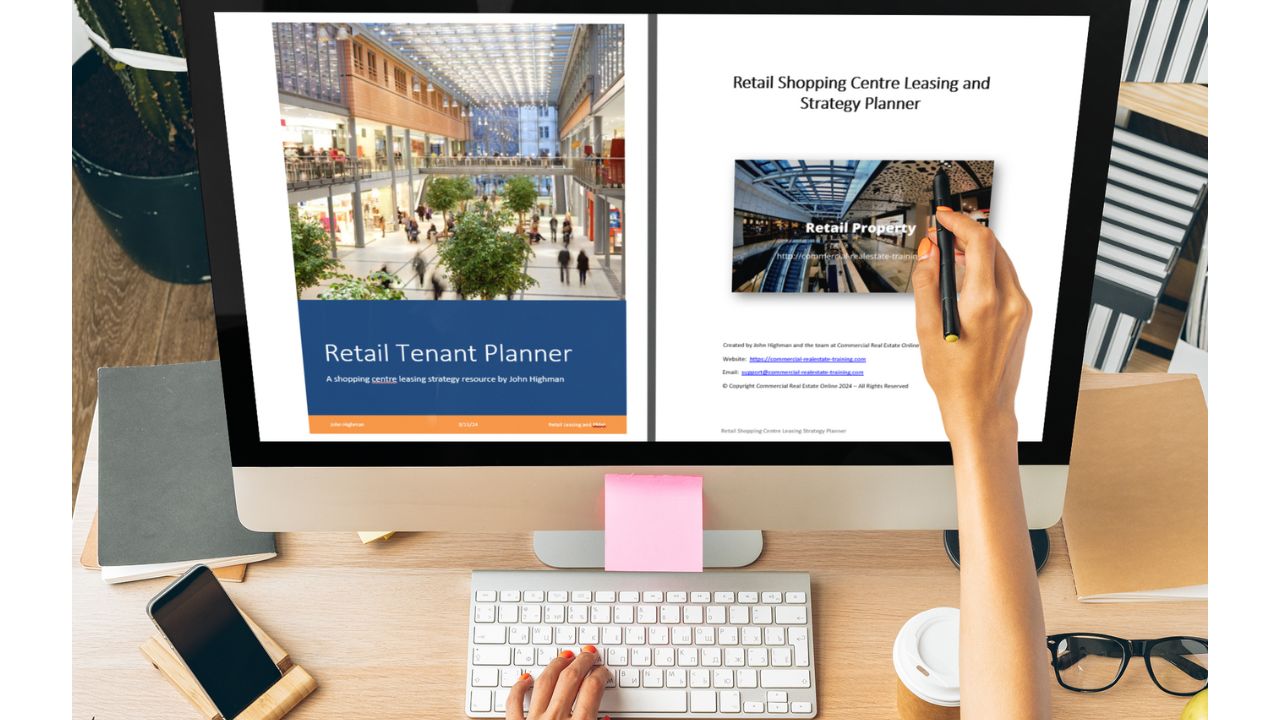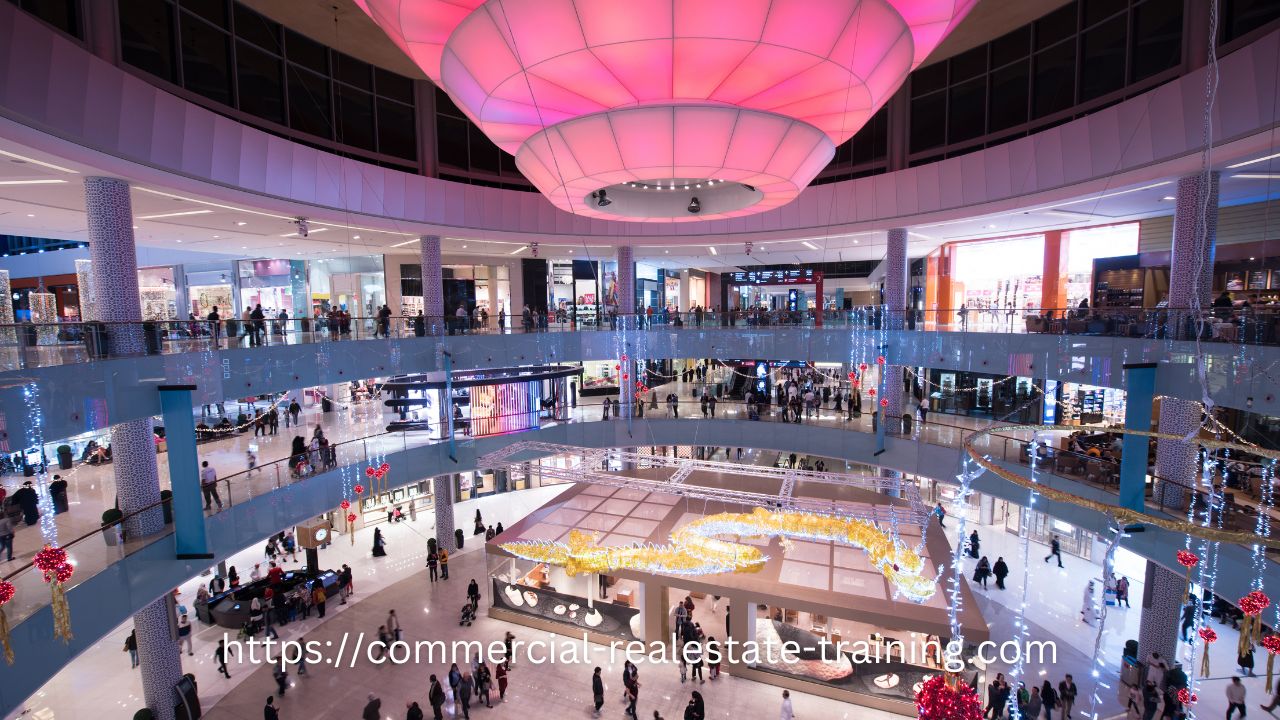Retail Revamp: A Guide to Business Planning and Marketing for Shopping Centre Growth
As a shopping centre or leasing manager, your role is pivotal in working with different people, tenants, and customer situations. You are the key to allowing for and optimising the uniqueness of the property, its design, and its location.
The level of customer interest you can generate and maintain for the property will determine the shopping center’s success.
Designing a shopping centre marketing package for each financial year is not just a move; it’s a strategic decision to promote the retail property and encourage sales. The marketing package is not just a part of the property’s business plan; it’s a key component you can shape and influence.

Download retail property checklist here
Checklist for real estate agents in sales, leasing, or property management.
Get the fully detailed retail property and shopping centre checklist in PDF form for your ongoing reference and use in sales, leasing, or property management activity with investment properties.
Retail Business Plan Format
Here is a typical business plan layout for a shopping centre; note the marketing package component:
- Owner-defined investment targets
- Property facts, layout, and design
- Tenancy mix facts and tenant retention plan (anchors and specialties)
- Rental budget and income streams (plus market rental expectations)
- Expenditure budget (recoverable and non-recoverable)
- Lease expiry, rent review expectations, and tenant option profiles for the next two years
- Standard lease documentation and terms to be used for any leasing required
- Vacancy marketing expectations and guidelines for resolving vacancies
- Tenant promotion and property marketing campaign across the year
- Rental targets and terms to be used for negotiations with each tenant
- Outgoings costs and budget – plus comparison to other local properties
- Maintenance programs for essential services and discretionary items
- Capital works programs and renovation strategies
- Risk assessments and code compliances
Every part of the retail shopping centre business plan is not just a piece, but a puzzle that interacts with each other to create the best outcome for the property owner. Why do you need to think about this? Given the Internet’s impact, changes have been occurring across the retail shopping environment and more changes will evolve due to online shopping. With their unique tenancy mixes, shopping centres need your special consideration and shaping over time.

Are Your Tenants Redundant?
Some tenant types are becoming redundant due to online shopping, while others are becoming more attractive and essential in the overall tenancy mix. Then, it is a matter of what tenants you have and where they are positioned around the retail property.
Do a SWOT analysis. As you understand what your customers are looking for in the property, you can move tenants around at lease expiry to better positions where they can encourage sales and return customer visits.
As a centre manager or property manager, you play a pivotal role in the success of the property’s marketing strategy. Your tenants, who fall into two different categories: specialities and anchor tenants, rely on your well-designed marketing package to encourage customer interest and, ultimately, sales.
As part of the promotional budget, it is wise to consider a series of marketing packages for the property throughout the year. These packages will showcase your strategic thinking and understanding of each tenant’s unique needs.

Retail Questions to Ask
Think about these questions as they relate to your managed retail shopping centre as you design your marketing packages:
- How can the anchor tenant integrate more closely and promotionally with the specialty tenants in the property? In most cases, the anchor tenant will focus on their trade figures and factors of customer attraction. Having them build their promotions in parallel with the overall property is a good move.
- Is there any conflict between the anchor and specialty tenants in merchandise offerings and positioning? This is sometimes the case with food-related merchandise. Over time, a successful anchor tenant can draw customers away from other tenants in the property. That is where the specialist tenants need to be more ‘specialised’ than what the anchor tenants can offer.
- What can you do to the property’s branding and signage to encourage a more vibrant retail environment? You have different zones of the property to consider, such as the shop fronts or bulkheads, the mall, common areas, pylon signs, and outside external signs on the property.
- Today, retail shopping centre marketing will be location-based, signage-based and online social media-related. Both channels of promotion offer many opportunities. Consider the typical trading year, holidays, and anniversaries relevant to the location and city. You can appoint a social media specialist to spread the word about your property at special events.
- A shopping centre is a local investment class, and customer attraction must always be ongoing. That is, you must know who your customers are and what they want from the property. Build your marketing campaigns around the local customer festivities, the holiday periods, and customer needs. Always track the impact of your marketing efforts so you can ‘tweak’ them and tune them for better results.
- What customer insights are valuable to consider regarding property promotion and marketing for the next year? You can leverage your property and sales data to interpret customer insights positively.
- How will the property change in the coming year due to renovations and will you need to adjust your marketing to suit? With vacancies and renovation plans, complementary marketing strategies can be deployed to offset vacancies, maintenance, and upgrade activities.
So, to create a marketing budget and package for your shopping centre, choose your marketing channels, customer base, and tenant mix. In larger shopping centres, it is wise to incorporate tenant contributions to the marketing promotional fund for the property. That contribution will likely be calculated as a percentage of the rental paid by each tenant.





